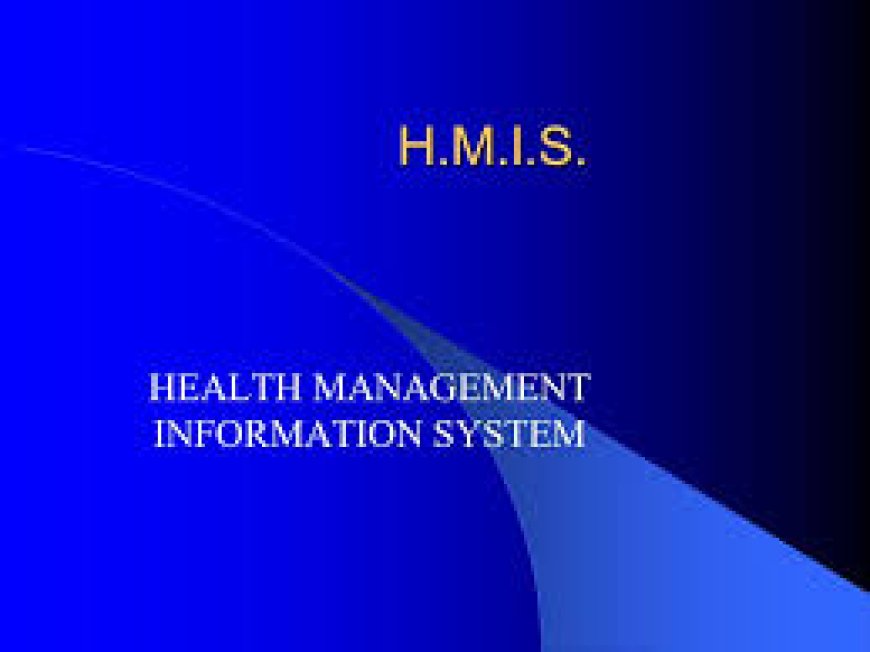Components of health information system in Kenya

Components of health information system in Kenya
Introduction.
A health information system (HIS) is a comprehensive framework that facilitates managing, storing, analyzing, and exchanging health-related information. It encompasses various components that collectively contribute to the functioning and effectiveness of a health information system, enabling efficient data management, improved decision-making, and better healthcare delivery.
Organization of Health Information System in Kenya:
The health information system in Kenya is organized at various levels:
· National Level: The Ministry of Health (MOH) provides overall leadership, coordination, and policy direction for health information systems in the country. The MOH is responsible for national health data standards, guidelines, and reporting requirements.
· County Level: Kenya has a devolved healthcare system, with health services managed at the county level. Each county's health management information system is responsible for data collection, storage, analysis, and reporting within its jurisdiction.
· Health Facility Level: Health facilities, such as hospitals, clinics, and dispensaries, collect and manage patient data through electronic or paper-based systems. They report aggregated data to higher-level health management information systems.
Key Components of the Kenyan health information system
The Kenyan HIS has the following key components:
· Data Sources: This component includes the various sources from which health data is collected. It can include health facilities, clinics, hospitals, laboratories, community health workers, vital registration systems, surveys, and other data collection mechanisms.
· Data Collection: It involves gathering health data from different sources. This can be done through various methods, such as paper-based forms, electronic data capture, mobile devices, or automated data feeds from medical devices and systems.
· Data Storage and Management: This component focuses on organizing and storing health data. It includes databases or electronic health record (EHR) systems that store and manage patient information, medical histories, diagnostic test results, and other relevant data. Proper data management ensures data integrity, security, and accessibility.
· Data Standards and Interoperability: Standardizing data elements, formats, and coding systems is crucial for efficient data exchange and interoperability. Commonly used standards in health information systems include SNOMED CT, LOINC, HL7, ICD-10, and DICOM. Interoperability enables seamless communication and data sharing among different healthcare providers and systems.
· Data Analysis and Reporting: This component involves using analytical tools and techniques to process and interpret health data. It includes generating reports, statistical analysis, data visualization, and trend analysis to support evidence-based decision-making, public health surveillance, and health research.
· Health Information Exchange (HIE) refers to the secure and standardized health information exchange between different healthcare organizations and systems. It enables the sharing of patient data across care settings. It supports continuity of care, care coordination, and public health reporting.
· Health Information Governance: This component focuses on the policies, regulations, and procedures for ensuring the privacy, confidentiality, and security of health information. It includes adherence to legal and ethical standards, data protection measures, and consent management.
· Health Information Technology Infrastructure: This component includes the hardware, software, and network infrastructure that supports the functioning of the health information system. It involves servers, computers, networks, connectivity options, security systems, and other technological resources.
· Training and Capacity Building: Effective use of a health information system requires a skilled workforce. This component involves training healthcare providers, administrators, and IT staff on data collection, system usage, data analysis, and information governance. Capacity building ensures the system's successful implementation and operation.
· Monitoring and Evaluation: Regular monitoring and evaluating the health information system's performance are crucial. This component involves assessing the system's effectiveness, efficiency, data quality, user satisfaction, and impact on health outcomes. It helps identify areas for improvement and supports evidence-based system enhancements.
The Four Functions of an Information System:
· Input: Gathering data from various sources and entering it into the information system.
· Processing: Manipulating, organizing, and analyzing data to derive meaningful information.
· Output: Presenting the processed information in a format that is understandable and useful for decision-making.
· Feedback: Assessing and using the output to refine the system or make necessary adjustments to improve its functioning.
Challenges of Health Information System:
· Data Quality: Ensuring accuracy, completeness, and reliability of health data can be a challenge, especially in resource-constrained settings.
· Interoperability: Integrating diverse systems and data sources, often with varying standards and formats, can hinder seamless data exchange and interoperability.
· Infrastructure and Connectivity: Inadequate infrastructure, limited access to electricity, and unreliable internet connectivity can impede the functioning of health information systems, particularly in remote areas.
· Human Resources and Capacity: The availability of trained personnel to collect, manage, analyze, and utilize health data effectively is often limited.
· Privacy and Security: Safeguarding patient privacy and ensuring the security of health information against unauthorized access or breaches pose significant challenges.
· Sustainability: Ensuring the long-term sustainability of health information systems, including funding, maintenance, and system updates, can be challenging.
Health Management Information System (HMIS) in Kenya
Functions of Health Management Information System (HMIS) in Kenya:
· Data Collection: Gathering health-related data from various sources, such as health facilities, community health workers, and vital registration systems.
· Data Storage and Management: Organizing and storing health data in a secure and accessible manner, often utilizing electronic health record (EHR) systems.
· Data Analysis and Reporting: Processing and interpreting health data to generate reports, conduct statistical analysis, and provide evidence for decision-making and policy formulation.
· Health Information Exchange: Facilitating the secure exchange of health information between different healthcare providers and systems, promoting coordination and continuity of care.
· Monitoring and Evaluation: Assessing the performance of the HMIS, ensuring data quality, identifying areas for improvement, and evaluating the impact on health outcomes.
· Capacity Building: Providing training and support to healthcare professionals and administrators to effectively use the HMIS and enhance data management skills.
Management Information System
The Three Functions of Management Information System (MIS):
· Decision Support: Providing accurate and timely information to support decision-making at various levels of management.
· Control: Monitoring and evaluating organizational performance against predetermined goals and standards.
· Operational Efficiency: Facilitating the efficient and effective execution of organizational processes and tasks by providing relevant information and automating routine tasks.
Functions of Information System Management:
· Planning: Developing strategies and plans to effectively use information systems to meet organizational goals.
· Implementation: Deploying and integrating information systems within an organization, ensuring smooth operation and user adoption.
· Operation and Maintenance: Managing the day-to-day functioning of information systems, including troubleshooting, system updates, and ensuring data security.
· Evaluation and Enhancement: Continuously assessing the performance of information systems, identifying areas for improvement, and implementing enhancements to optimize their effectiveness.
Components of Health Information Management (HIM):
· Health Records: This component includes the collection, organization, and maintenance of individual patient health records. It involves capturing patient demographics, medical history, diagnoses, treatments, and other relevant information.
· Coding and Classification Systems: This component involves assigning standardized codes to diseases, procedures, medications, and other healthcare-related data. It ensures consistency and enables data analysis, reimbursement, and research.
· Data Privacy and Security: HIM systems require robust measures to protect the privacy and security of patient information. This includes implementing access controls, encryption, audit trails, and compliance with relevant regulations, such as HIPAA (Health Insurance Portability and Accountability Act).
· Health Information Exchange (HIE): HIE enables the secure sharing of patient health information across different healthcare organizations and systems. It involves standardizing data formats, protocols, and interfaces to facilitate interoperability.
· Health Data Analytics: HIM systems often incorporate tools and techniques for analyzing health data. This includes data mining, reporting, and statistical analysis to derive insights, identify trends, and support decision-making and policy formulation.
· Information Governance: This component encompasses the policies, processes, and guidelines for managing health information. It includes data quality assurance, information standards, data governance, and compliance with legal and ethical requirements.
Functions of DHIS2 (District Health Information System 2):
DHIS2 is a widely used health information system software, particularly in low-resource settings. Its functions include:
· Data Collection: Capturing health data from various sources using customizable data entry forms.
· Data Storage and Management: Storing and managing health data in a centralized database, with support for different levels of data aggregation.
· Data Analysis and Reporting: Generating reports, charts, and maps to analyze and visualize health data, facilitating evidence-based decision-making.
· Data Sharing and Interoperability: Enabling secure and standardized health information exchange between different DHIS2 instances and systems through web services and APIs.
· Configurability and Customization: Allowing customization of data elements, indicators, forms, and workflows to adapt to specific country or program requirements.







